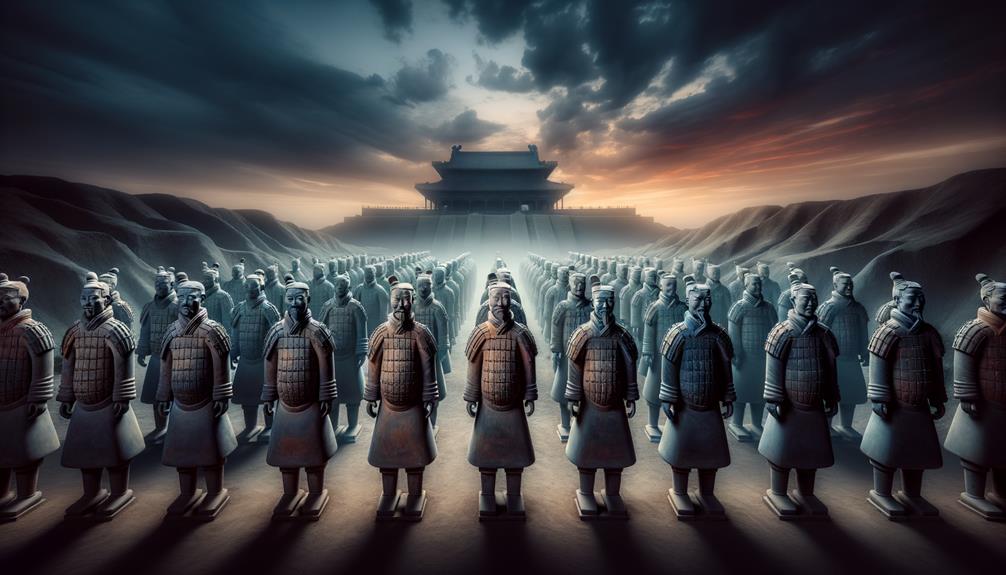The moment I came across the Terracotta Warriors at Qin Shi Huang's tomb, their sheer number blew me away. Imagine this – more than 8000 life-sized terracotta figures, and each one is a testament to the amazing art and skill of the Qin Dynasty. The attention to detail is mind-boggling. It not just shows the physical attributes of each warrior but also gives a clear picture of the military strategies used back then. It felt like I had chanced upon a mute army from a time long gone, eternally ready for combat. But the intrigue doesn't end there. There are still hidden mysteries inside, eager to narrate more tales of a bygone era.
The Discovery of the Terracotta Warriors
Imagine this – it's 1974, and you're a local laborer in Shaanxi Province, China. One day, you accidentally dig up something extraordinary – over 8,000 impressively detailed, life-sized figures of soldiers, chariots, and horses, all made from terracotta. Sounds like something straight out of an adventure novel, right? But this find is real, and it's considered one of the most important archaeological discoveries of the 20th century.
These terracotta warriors were part of the mausoleum of the First Emperor Qin. This vast underground army gives us a unique look at the grandeur and scope of his reign. Each terracotta soldier, unique in its facial features and hairstyles, speaks volumes about the incredible artistry and craftsmanship of that time. The sheer size and intricate detail of this tomb complex is mind-blowing, reflecting the First Emperor's power and grand ambition.
What's really exciting is that this find in Shaanxi Province provides us with priceless insights into the military tactics of the Qin dynasty. It's like a history book waiting to be read, giving us an in-depth understanding of an era gone by.
The Significance of the Necropolis
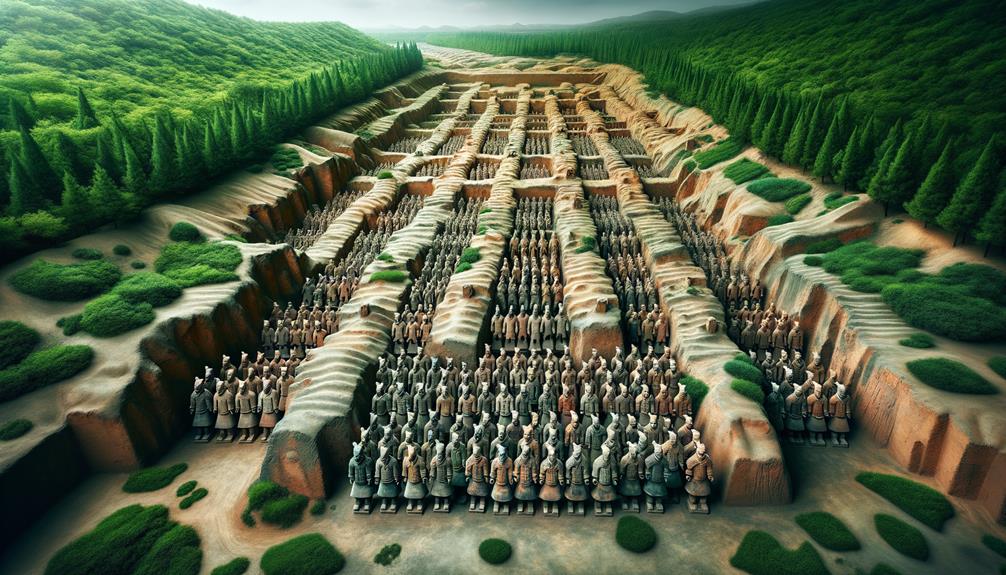
Wondering why Qin Shi Huang's necropolis is such a big deal? Well, let me tell you, it's quite an eye-opener. The burial complex of the First Qin Emperor is like a walk-in history book – an archaeological jewel that offers a peek into the rich tapestry of Chinese history. The necropolis is home to the Mausoleum of Emperor Qin, a testament to the ancient Chinese concept of life after death.
Let's cut to the chase and break down its importance into three key elements:
- The Terracotta Warriors and Horses: This place is home to more than 8,000 terracotta soldiers – a spectral army standing guard for their ruler.
- Historical Insights: The power and artistic prowess of the Qin Dynasty, perfectly preserved for us to marvel at.
- New Finds: Every new discovery at this archaeological site peels back another layer of history for us to understand.
These relics from the past breathe life into old stories, turning Qin Shi Huang's necropolis into a priceless bridge between ancient times and today.
Sounds exciting, right? It's like we have a direct line to the past that helps us understand more about where we come from and how we've evolved. And that, my friend, is why this necropolis is so significant.
Detailed Analysis of Warrior Figures
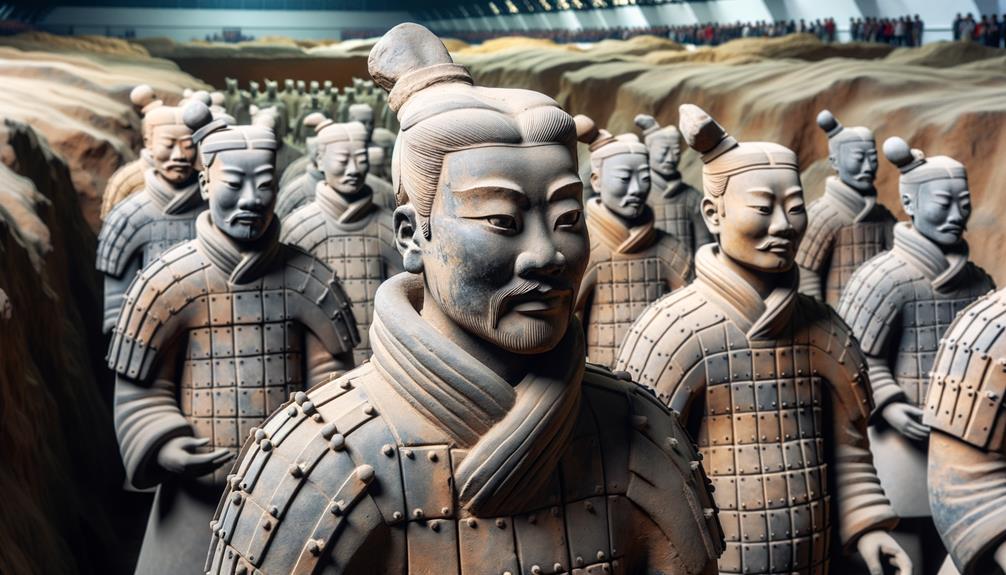
Alright, let's zoom in a bit and talk about the individual terracotta warriors. Each one is an artistic marvel from ancient China and a testament to the military strength of the Qin Dynasty. These are not tiny sculptures; they're full-sized figures, almost six feet tall and weighing in at around 600 pounds. They serve as a testament to the military ingenuity of the First Emperor.
No two warriors are the same, which really speaks to the craftsmanship of the Qin. Each figure boasts a unique set of facial features, hairstyles, armor, and shoes. They're arranged meticulously in a battle-ready formation, echoing the Qin military structure.
The terracotta army comprises foot soldiers, archers, chariot drivers, generals, and officers. These figures serve as a dynamic illustration of the Qin military, giving us an up-close and personal look at the structure and ethos of an ancient society.
Scientific Research and Findings
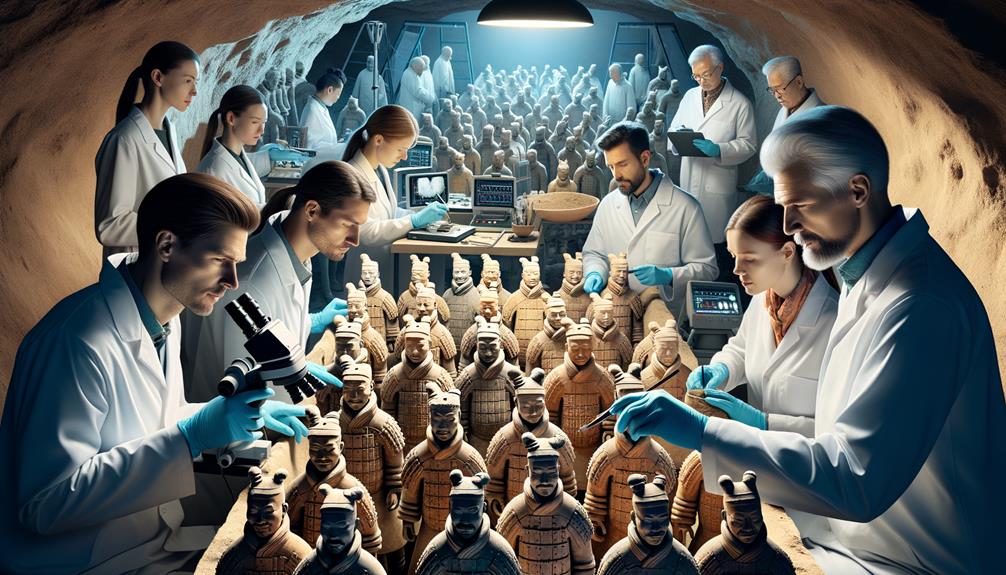
Let's step into the world of science, research, and the fascinating secrets they reveal. It's genuinely captivating to see how each terracotta warrior, uniquely crafted with individual facial features, hairstyles, and armor, tells a tale of ancient skill and inventiveness. These terracotta warriors, built with precision and the deft hands of sculptors, speak volumes about a time long past.
- Materials Used: The choice of terracotta for these statues allowed the artists to depict the warriors in great detail, which was further accentuated by the original paintwork.
- Battle Formation: The way these warriors are set up gives us a glimpse into the military strategies of ancient China.
- Craftsmanship: The distinct facial features of each warrior reflect the artisan's talent and careful consideration.
Science helps us to listen to these silent terracotta guardians as they quietly share stories from a bygone era, each one a colorful testament to the rich history of China.
Worldwide Exhibitions and Impact
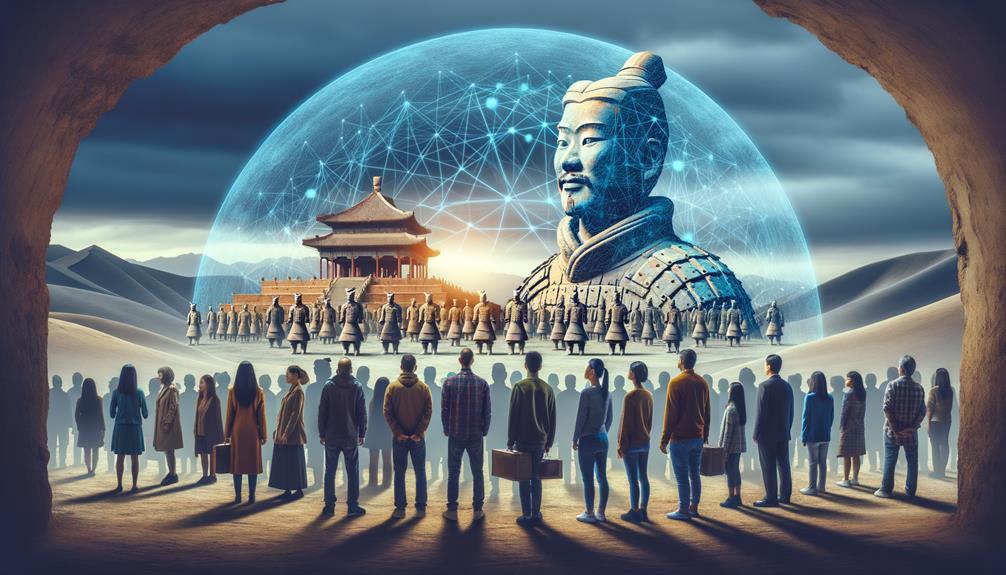
The terracotta warriors are more than mere relics of China's vibrant past. They're like silent narrators, whispering tales of ancient Chinese culture to a worldwide audience through their global exhibitions. Major museums across the world have hosted these enigmatic figures, attracting a horde of visitors who are drawn to their unique allure.
| Museums | Visitors | Impact |
|---|---|---|
| British Museum | Countless | Raised global consciousness |
| Museum of Qin Terracotta Warriors and Horses | Numerous | Advanced academic studies |
| National Geographic Museum | Multitudes | Promoted conservation |
These terracotta warriors have left an indelible mark in various forms of media, including documentaries and books. They've stimulated academic studies and fostered partnerships for preservation. They're seen not just as Chinese artifacts, but symbols of a shared global heritage. Inviting visitors to journey into the heart of a long-lost era, their exhibitions challenge us to unravel the myths and realities they embody.
Frequently Asked Questions
Are the Terracotta Warriors of Qin Shi Huang Buried With Him?
Absolutely, Qin Shi Huang's terracotta warriors were buried alongside him. This magnificent array of funerary art was crafted to safeguard him in his next life. Imagine this: more than 8,000 figures, all arranged like a battle-ready army around his tomb. Really puts things into perspective, doesn't it?
What Are the Chinese Warriors From Tomb of Emperor Qin Shi Huangdi?
The terracotta warriors found in Emperor Qin Shi Huangdi's tomb are an awe-inspiring sight. An impressive army of more than 8,000 unique, life-sized statues, each one is crafted with an attention to detail that leaves you astounded. Every warrior showcases unique characteristics, a testament to the emperor's vast influence that was intended to extend into the afterlife.
Why Is Qin Shi Huang Tomb Not Opened?
The tomb of Qin Shi Huang remains unopened largely due to worries about preserving the site. Its intricate build and the possibility of booby traps add to the hurdles. As we continue to make strides in research and technology, it's conceivable that we might witness the unveiling of the tomb in the days to come.
Who Destroyed the Terracotta Warriors?
The Terracotta Warriors met their unfortunate end at the hands of Xiang Yu's army in 206 BCE, just after the Qin Dynasty crumbled. Despite the damage they sustained, a lot of these ancient warriors have been pieced back together thanks to dedicated archaeological work.

